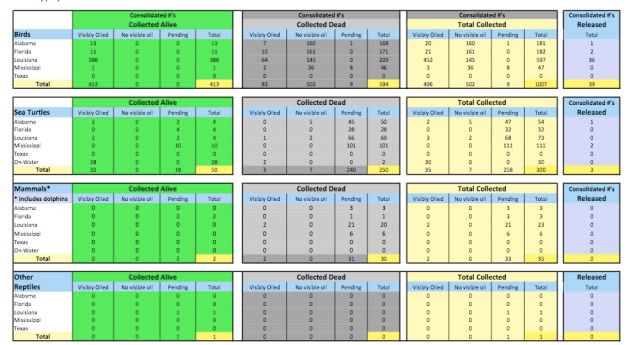(2PM EST – promoted by Nightprowlkitty)

http://www.fws.gov/home/dhoils…
594 birds
250 turtles
30 mammals
11 humans

Jun 08 2010
(2PM EST – promoted by Nightprowlkitty)

http://www.fws.gov/home/dhoils…
594 birds
250 turtles
30 mammals
11 humans
12 comments
Skip to comment form
Author
Author
That although Louisiana is getting all the press – many of these visibly oiled animals were found in Mississippi, Alabama, and Florida.
spawn right where the well is…
Bluefin tuna particularly vulnerable to Gulf of Mexico oil leak, NOLA.com
but hell, we can’t see them so who cares. throw in radioactivity, gasses that the masses can’t see, and a whole plethora of industrial cleaning solutions just to name a few. just keep the mic and health insurers humming along. we’re all soldiers the globalized industrial wheel. what was that song in the 60’s–Universal Soldier?